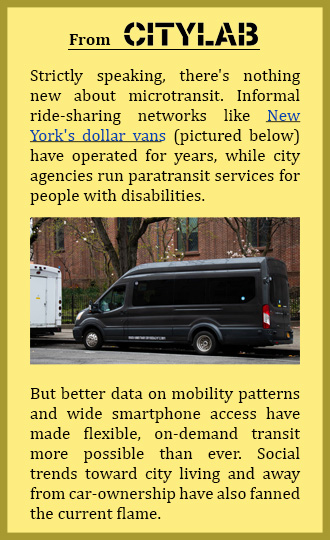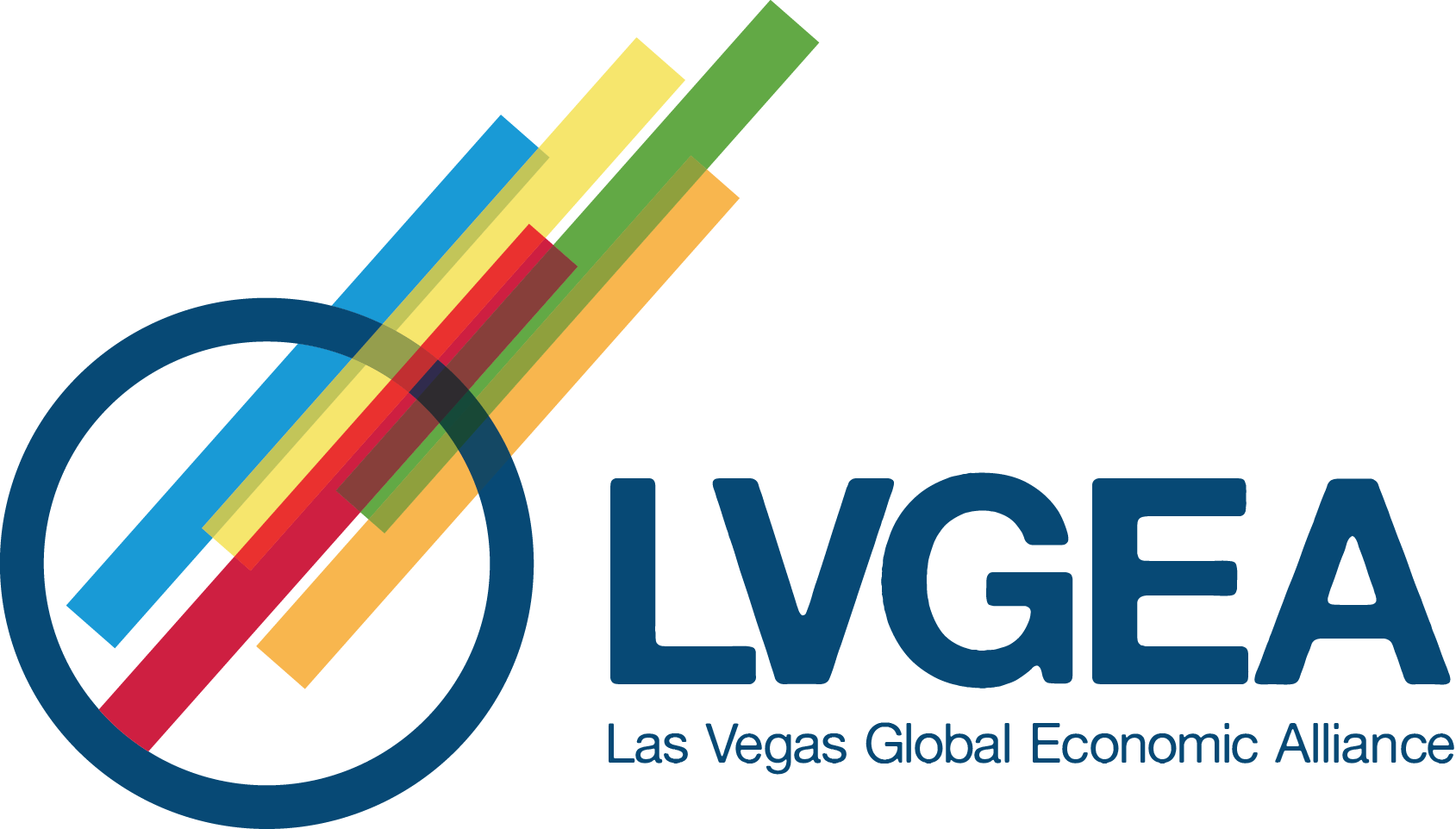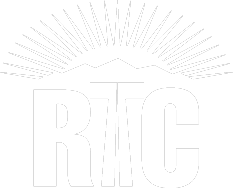THINKING MICRO
RTC awarded federal grant to study microtransit in underserved areas
The RTC of Southern Nevada is exploring whether thinking small – well, micro – could be a big solution to a pressing transportation issue in Southern Nevada.
Late last year, the RTC was awarded a $125,000 Federal Transportation Administration (FTA) grant to study how microtransit could improve access to jobs, healthcare, and other essential services in underserved areas across the valley.
Microtransit is generally characterized as tech-enabled multi-passenger transportation service that offers flexible routes and on-demand scheduling. Conceptually, it fits somewhere between public mass transit and ride-hailing services (such as Uber and Lyft).
The RTC was one of 25 agencies across the country to receive a grant award through FTA’s Helping Obtain Prosperity for Everyone (HOPE) program, which aims to improve transportation in areas of persistent poverty.
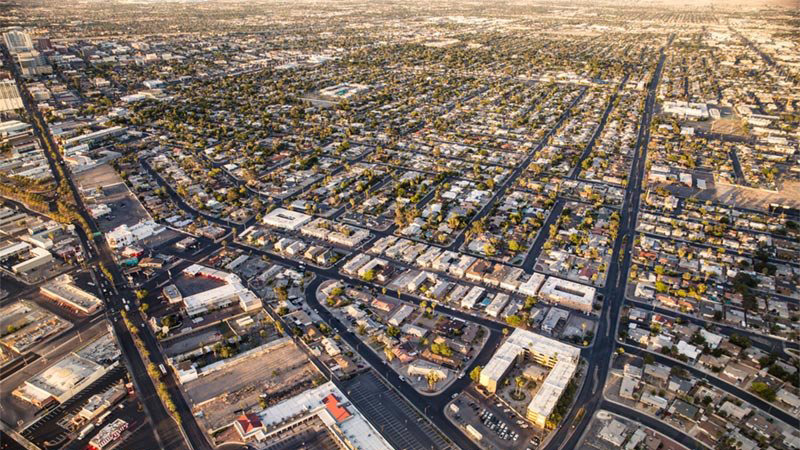
downtown-aerial
Downtown Las Vegas and its surrounding neighborhoods are part of the study area for the RTC’s upcoming microtransit study. The study will explore how microtransit could improve access in areas of persistent poverty.
The RTC of Southern Nevada is exploring whether thinking small – well, micro – could be a big solution to a pressing transportation issue in Southern Nevada.
Late last year, the RTC was awarded a $125,000 Federal Transportation Administration (FTA) grant to study how microtransit could improve access to jobs, healthcare, and other essential services in underserved areas across the valley.
Microtransit is generally characterized as tech-enabled multi-passenger transportation service that offers flexible routes and on-demand scheduling. Conceptually, it fits somewhere between public mass transit and ride-hailing services (such as Uber and Lyft).
The RTC was one of 25 agencies across the country to receive a grant award through FTA’s Helping Obtain Prosperity for Everyone (HOPE) program, which aims to improve transportation in areas of persistent poverty.
While traditional transit service is available in most of the areas being examined as part of the study, the cost of and time spent traveling between the urban core and jobs in outlying areas of the region can be burdensome to low-income individuals.
In addition to microtransit, the study may also examine modifying existing routes, including RTC Silver STAR service, to better connect people living in food deserts – low-income neighborhoods with limited access to grocery stores – to healthy food providers.
Microtransit is generally characterized as tech-enabled multi-passenger transportation service that offers flexible routes and on-demand scheduling. Conceptually, it fits somewhere between public mass transit and ride-hailing services (such as Uber and Lyft).Late last year, the RTC was awarded a $125,000 Federal Transportation Administration (FTA) grant to study how microtransit could improve access to jobs, healthcare, and other essential services in underserved areas across the valley.
The RTC was one of 25 agencies across the country to receive a grant award through FTA’s Helping Obtain Prosperity for Everyone (HOPE) program, which aims to improve transportation in areas of persistent poverty.
While traditional transit service is available in most of the areas being examined as part of the study, the cost of and time spent traveling between the urban core and jobs in outlying areas of the region can be burdensome to low-income individuals.
In addition to microtransit, the study may also examine modifying existing routes, including RTC Silver STAR service, to better connect people living in food deserts – low-income neighborhoods with limited access to grocery stores – to healthy food providers.
Regional planning team researches approaches to sustainability planning
Environmental sustainability has been an issue of growing importance in Southern Nevada in recent years.
Policy changes and directives at both the local and state levels – most notably an executive order signed by Gov. Sisolak in November 2019 that calls for Nevada to adopt a statewide Climate Initiative – have led to discussions about how the region might approach environmental sustainability planning (also referred to as climate action planning).
It was with this in mind that the regional planning team at the RTC of Southern Nevada began a research project last year to examine approaches other cities and regions have taken when tackling environmental sustainability planning.
Research findings, developed following an extensive literature review and interviews with planning agencies across the country, are available in a report that was released earlier this month.
The research found two broad approaches to environmental sustainability planning: a local “sum of parts” approach, and a multi-jurisdictional, collaborative approach.

The Las Vegas Strip, seen in the distance, behind an array of solar panels. (Photo credit: Newsweek)
In the local “sum of parts” approach, local agencies or municipalities adopt resolutions or plans that are manageable within their boundaries and hope that when all local efforts are added together, they contribute to a broader regional impact.
Alternatively, the multi-jurisdictional, collaborative approach is characterized by agencies and municipalities working together to develop, adopt and implement shared goals.
While multi-jurisdictional, collaborative approaches are emerging as the preferred method for sustainability planning, the research found there are many ways in which collaboration can occur. Regional collaborative planning around complex issues is still new for many communities, and the research found that collaborative work around the country is focused primarily on shared priorities and building early success and momentum for the future.
In addition to describing and delineating between the two approaches, the report also presents 12 best-practice principles gleaned from an examination of existing sustainability plans from regions across the country.
Generally, these 12 principles highlight the need to:
• Determine achievable and measurable goals and strategies
• Create performance-based implementation and evaluation processes
• Conduct broad and inclusive community engagement where equity and environmental justice are centered in environmental sustainability work
• Reflect the community’s vision for quality of life and communicate how sustainability efforts will positively impact the community’s future
While the research and findings are intended to help inform future regional sustainability work, it is not intended to prescribe a specific approach or actions for the region. Next steps should be decided together as a region.
In addition to helping provide a foundation for future sustainability work, the research project also advances several goals and strategies in the Southern Nevada Strong Regional Plan. Most directly, the report provides insight, best practices, and examples for how other regions have worked together to collaborate around environmental sustainability planning, information that can help build capacity and enhance regional collaboration here in Southern Nevada.
Indirectly, as the region moves forward with environmental sustainability planning, the research can support sustainability goals that are found in the plan, including reducing greenhouse gas emissions through reduced vehicle miles traveled and more efficient land use, among many others.
The final report, as well as accompanying research and resources, can be found here.
Progress assessed on the Downtown North Las Vegas Opportunity Site
In the five years since the adoption of the Southern Nevada Strong (SNS) Regional Plan, the city of North Las Vegas has adopted a citywide Complete Streets policy, secured funding for a new downtown park, and partnered with the Southern Nevada Health District to advance active transportation in priority zip codes downtown.
These are just a few examples of recent progress the city has made in advancing the SNS Downtown North Las Vegas Implementation Strategies (2015), a plan adopted in conjunction with the SNS Regional Plan to model what implementation of the plan’s strategies would look like in one geographic area.
Downtown North Las Vegas (DTNLV) is one of four SNS Opportunity Sites identified in the regional plan.
As part of an ongoing effort to assess progress and update the Implementation Strategies, the regional planning team at the RTC of Southern Nevada, in partnership with the city of North Las Vegas, recently completed the DTNLV 5-year Progress Report (2020) for the DTNLV Opportunity Site.
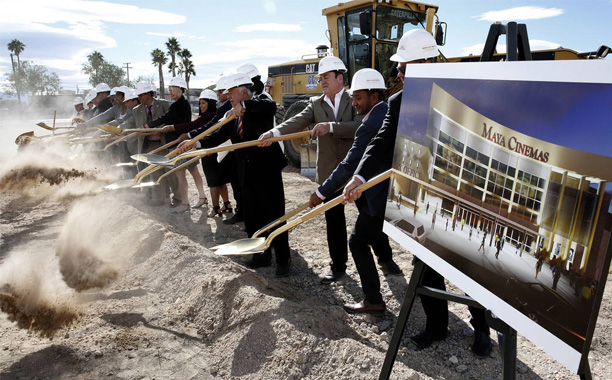
City of North Las Vegas and Maya Cinemas officials at the official groundbreaking for the Maya Cinemas center in November 2017. The cinema is just one of the recent new developments in downtown North Las Vegas. (Photo credit: Las Vegas Review Journal)
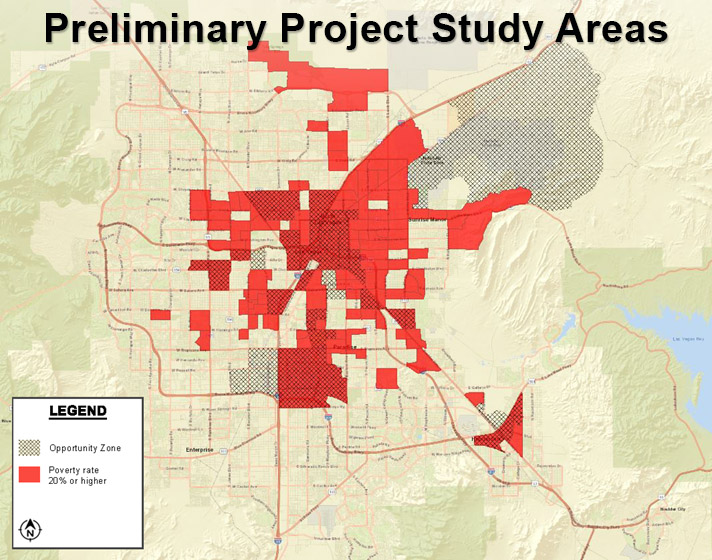
SNS Opportunity Sites
Most notably, the region hasn’t seen new development like the desired compact, sustainable development types (including mixed-use and transit-oriented development) that are called for in the regional plan. Overall, development types have been slow to evolve throughout the valley.
There have been several recent studies conducted throughout the region that have identified potential solutions that may help change this pattern in the near future. Such studies include RTC’s Livable Centers Program as well as the Maryland Parkway Corridor Transit-oriented Development (TOD) Plan, which is currently underway.
The DTNLV 5-year Progress Report (2020) also provides new research and strategies for overcoming challenges in implementation of the plan.
Case study research provides strategies for improving engagement and relationships with downtown residents, funding strategies for implementing more placemaking efforts, and resources for revitalizing older, historic residential areas like those that surround downtown.
Other components of the report include a detailed progress assessment of the implementation strategies, and updated strategies for moving forward, including resources for bringing new partners and funding to this work.
The complete report can be found here.
With the completion of the DTNLV 5-year Progress Report (2020), the regional planning team is now working on completing progress assessments for the Opportunity Sites at Boulder Highway (at Gibson Rd. and Broadbent Blvd.) and the Las Vegas Medical District.
More than five years removed from the adoption of these Opportunity Site implementation strategies, the assessment process is an opportunity to ensure that the goals and objectives for each Opportunity Site are still reflective of the community’s values, and that the region’s most pressing problems are still being addressed.

